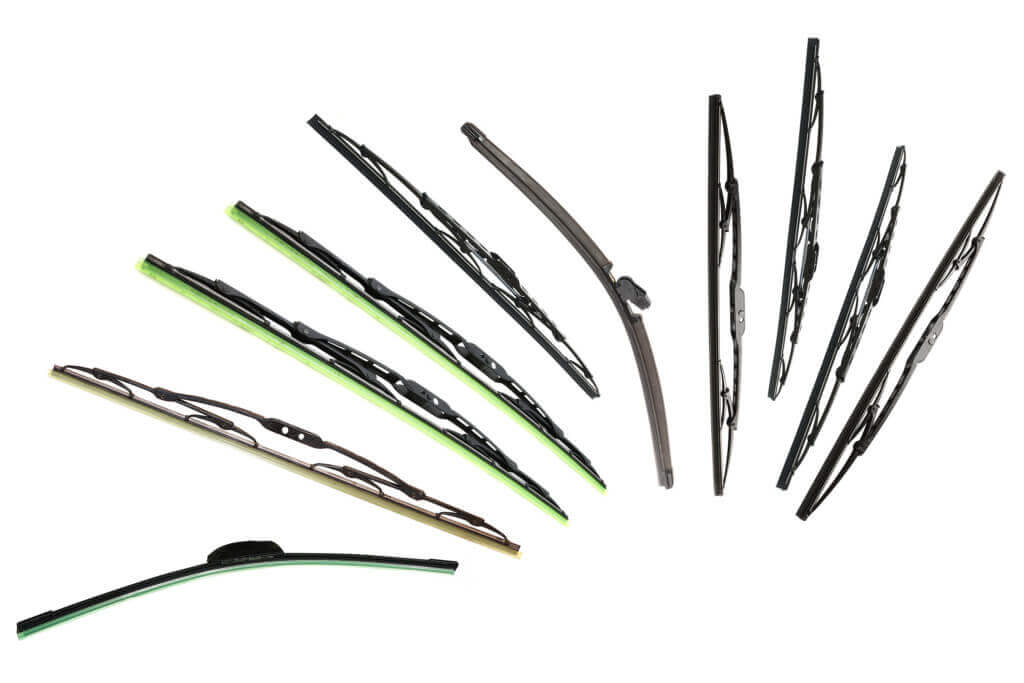When you think of the important safety components in your vehicle, you probably think of the brakes, tyres and engine - but what about your windscreen wipers?
Your car’s windscreen wipers help you to drive safely in wet weather conditions, so it is essential that you take good care of them and replace them when needed.
Read on and find out how to check your windscreen wipers, how to replace them, and what causes windscreen wiper problems in the first place.
Page Contents
- How Do I Check The Condition of My Wiper Blades?
- How Do I Change My Windscreen Wipers?
- Do My Wiper Blades Need To Be Replaced?
- Which Windscreen Wipers Do I Need?
- How Much Do Windscreen Wipers Cost?
- Why Are My Wiper Blades Squeaking?
- How Do I Clean My Wiper Blades?
- Why Are My Wipers Not Working?
- FAQs
How Do I Check The Condition of My Wiper Blades?
When your windscreen wipers are in good condition, they should be able to clear the rain away from your windscreen, leaving no streaks of water behind.
Streaks will only be left behind if the blade fails to make contact with the glass.
Wiper blades can become damaged if a loose chip from the road hits them, as can the wear and tear of daily use.
When your wiper blades wear out, they can lose their shape and will not fit neatly beside the windscreen as they should.
If you inspect your wiper blades and notice that they fail to touch the glass, look damaged or seem to have lost their shape, then it could be time to change them.

Better to replace faulty wipers early than to realise you need an expensive windscreen replacement later down the line if they are allowed to damage your windscreen.
How Do I Change My Windscreen Wipers?
Replacing your windscreen wipers yourself is an easy task, provided you pick the correct size of wiper for your vehicle.
There are 3 parts of the windscreen wiper:
- The lower wiper arm
- The metal/plastic blade attached to this arm
- The rubber strip
Of these 3 parts, you should only change the rubber strip - you should lay a towel on your windscreen to prevent the wiper blade cracking it in the event it snaps back whilst you change it.
To change your windscreen wipers, raise the metal/plastic arm away from the windscreen.
The lower wiper arm should lock in a perpendicular position and hold steady whilst you change the blade.
Though, the spring-loaded arm can snap back if you aren’t careful.
Unhook the old wiper blade, and press on the small plastic stopper or pins at the joint where the blade meets the arm.
This should separate the old wiper blade from the arm. Make sure that you keep one hand on the blade throughout the process.
Slide the new wiper blade onto the same end of the arm. Gently pivot it until the hook snaps into place and secures it.
You can then lay the wiper back against the windscreen, and repeat the process on the second arm.
Do My Wiper Blades Need To Be Replaced?
If you are aware of any of the following warning signs, then it may be time to replace your windscreen wiper blades:
- Strange noises
- Irregular movement
- Ragged blades
You should not hear much noise from your windscreen wipers, and they should move smoothly.
Any sound or judder can indicate that the blades have worn out, and carrying out a visual inspection of the blades which reveals any frays or tears in the rubber can tell you when you need a replacement.
Alternatively, if your windscreen wipers seem to be in good condition but are not working properly, then there could be an issue with the wiper motor, pivot nuts or maybe even a blown fuse.
A lack of visibility as a result of worn out wiper blades can be dangerous, and can even result in MOT failure. Be sure to check them ahead of your test.
Which Windscreen Wipers Do I Need?
It is important that you replace your windscreen wiper blades with the same blades you are currently using.
If you replace your wiper blades with smaller ones, then they won’t be able to cover your entire windscreen.
On the other hand, if the wipers are too big, then they will wear out much faster, and the excess rubber could get damaged.
Were you to use the wrong type of blade, then they may not even attach to the wiper mechanism, and could cause further damage.
You will need to buy both a drivers-side an a passengers-side wiper blade - these are usually different sizes but use the same fitting mechanism.
Windscreen wiper blades are measured in inches or millimetres, and range from 9” to 32”, or 250mm to 813mm.

As you can see, there are plenty of windscreen wipers to choose from. You must choose the type that fits your car and clears your windscreen effectively.
To find the windscreen wiper size that best suits your vehicle, you can refer to your vehicle handbook.
Many online retailers will tell you which size you need, and recommend suitable options - just enter your reg to see their available stock.
Alternatively, you can ask a local garage to identify the size of wiper blades you need, and order and fit these for you - though you should be able to perform this task yourself.
How Much Do Windscreen Wipers Cost?
Windscreen wipers can cost on average between £10 and £30.
We would recommend investing in blades that err on the more expensive side, as they may last longer than the cheaper options.
Why Are My Wiper Blades Squeaking?
Any repetitive and unusual noise can make for an uncomfortable - and irritating - driving experience.
There are a few reasons why you may notice a squeaking sound coming from your wiper blades:
- The windscreen may be dirty
- The rubber on the blades may be brittle
- The windscreen wipers may need a clean
Any dirt, sand or other debris on the windscreen - or embedded in the wipers themselves - can cause this squeaking sound.
You may also notice that your wipers aren’t clearing the windscreen as effectively as they used to, which can signal that it is time to give your windscreen and wipers a good clean.
How Do I Clean My Wiper Blades?
It doesn’t take long to clean your wiper blades, and this can have a really positive impact on the safety of your vehicle and your visibility.
When you want to clean your windscreen and wipers, you should clean the windscreen first.
Make sure that you pull the windscreen wiper arms away from the windscreen until they lock in place - you can hold them whilst you clean if they won’t do so.
Take a sponge and dip it in some warm soapy water - or undiluted washer fluid - and run it over the windscreen, and then the wiper blades.
You can also use a hose or jet washer to give the windscreen an in-depth clean.
Take care to be gentle - if you apply too much pressure then you could damage or pull off the rubber on the blades by accident.
Clear away any dirt or debris from the base of the wiper arms and the mechanism - this should fix any squeaking.
Make sure that you get rid of all soapy residue on the wipers too - you can use surgical spirit to do this.
Do not use white spirit to clean your wiper blades.
Please note, sometimes streaking on the windscreen is not caused by the wiper blades, but rather a faulty mechanism which is causing the wiper blades to stick to the windscreen.
Why Are My Wipers Not Working?
Whilst cleaning your wiper blades can help in the short-term, they will need to be replaced if you notice any of the following problems:
- Streaking
- Skipping
- Squeaking
- Smearing
Any of these issues can signal that it is time to replace your windscreen wiper blades.
Anything from an issue with the rubber blades to the motor system itself could be causing an issue with your wiper blades.
The Wiper Blades Have Torn
When the rubber edges on your wiper blades tear, the wiper cannot make proper contact with the windshield in order to clear away moisture and debris.
The small gap created between the missing rubber can actually trap dirt which can scratch at the glass.
You should replace torn wiper blades as soon as possible so that your visibility is not compromised.
The Wipers Have Snow or Ice on Them
If heavy, wet snow is allowed to sit on your wipers, then it will need to be cleared by a snow brush before you use your wipers.
Heavy snow can bend the wipers, which can in turn cause damage to the wiper motor or transmission.
The Wiper Motor Has Failed
As your windscreen wipers are powered by a small electric motor, this can short-circuit.
If you switch on your wipers and nothing has happened, then there could be a loose circuit.
Whilst you may feel comfortable inspecting the motor yourself, we would recommend seeking professional help with this.
The Wiper Pivot Nuts Are Loose
The wiper pivot nuts connect the wiper arms to the transmission.
When the nut becomes loose, the motor will still turn, but the wiper arm won’t move.
You may be aware of a whirring noise coming from your windscreen wipers, without any movement. In some cases, one wiper may move but not the other.
Check the pivot points and tighten any nuts if necessary.
If this is the issue, then you won’t need to change your wiper blades.
The Wiper Fuse Has Burned Out
If the wiper motor is overloaded, then the fuse can burn out.
You should look for any obstructions that could be overloading the motor.
The fuse can burn out if you try to use the wipers to clear snow and ice from the windscreen, or if there is another less obvious fault.
Clear the obstruction and replace the fuse.
If this still doesn’t resolve the issue, you should have it looked at by a professional mechanic, who will be able to tell you why this has happened.
We hope that you have enjoyed learning how to take good care of your windscreen wipers.
Keeping up with regular car maintenance in this way can help you to stave of unnecessary repair costs, and enhance your vehicle's performance.
FAQs
When Should I Replace My Windscreen Wipers?
What Are Wiper Blades Made From?
Why Should I Replace My Windscreen Wipers?







